Millions of oysters were killed by a devastating disease on the Hawkesbury River’s crippling the lifeblood of the waterway and the farmers, writes Jake McCallum and Maryanne Taouk
Oyster farmers on the Hawkesbury had experienced devastation before — but nothing compared to the swift outbreak of a disease that claimed more than 10 million oysters in a matter of hours and sent a total of 22 once-lucrative businesses to the depths of despair.
Bruce Alford will never forget the day the riverside community changed forever.
He says the rattling of dead oysters in their spats echoed across the Hawkesbury as word of devastation spread to the townships that relies on the multimillion-dollar industry.
“Farmers were forced to abandon their crops, their community and never return,” Alford says as he looks out over the river.

“We were all like family, they are supposed to be your competition, but that isn’t how life works up here. We all try to weather the storm together and face hardships as a community.
“In a matter of days the Hawkesbury went from 30 businesses to about eight struggling farmers.”
Some farmers — mostly those with wages and several mortgages to pay — left quickly, while others suffered for months as their income dried up and they were forced to let go of staff with a wealth of knowledge and decades of experience.
“It was devastating, having to tell your staff they are no longer required, because once they are gone from this industry they are never coming back. It is too unpredictable,” he says.
Alford, who has spent more than 30 years working in the industry said the diseases that have rocked the river were part of a “worldwide phenomenon” that couldn’t be avoided.

Dealing with disease
Two different, but equally destructive diseases have brought farmers on the Hawkesbury to their knees since the turn of the century.
In late 2004, the river suffered its first widespread outbreak of QX disease — a parasite that infects Sydney rock oysters — resulting in the slow and painful mass destruction of countless spats across the river.
The disease took hold of the industry for several years, before farmers were forced to diversify and introduce Pacific oysters in an attempt to revive the industry.
However, in late January 2013, spats of oysters across the Hawkesbury River faced several days of extreme heat with farmers desperately working to reduce temperatures at their leases across the river.
“We were out on the boats and we were hit with an overwhelming smell of death in the air.”
High temperatures on the water over two days acted as the perfect conditions for Pacific oyster Mortality Syndrome to thrive — killing more than 10 million oysters in a matter of hours.
“We knew something was wrong straight away,” Alford says. “We were out on the boats and we were hit with an overwhelming smell of death in the air.”
Bruce Alford described the outbreak as volatile, swift and unpredictable.
“POMS smashed us over 48 hours and wiped out the majority of our crops,” he says.
“Within a week it had spread more than 100km up the river.”

A legacy to uphold
Hawkesbury River veteran Rob Moxham is a forth generation Oyster Farmer and considered the industry educator, transforming dozens of young men eager for adventure into experts in their field.
“I have been working for myself since I was 21,” he says.
“In its heyday the oyster and the fishing industry employed most of the people in the area, the pub did well, so did the general store.
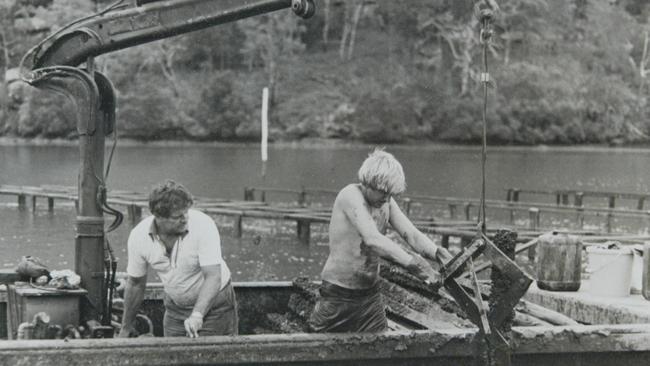
“It was very lucrative and the Hawkesbury River was famous for its Sydney rock oysters.”
Moxham says he never thought the widespread devastation of two deadly diseases hitting the Hawkesbury would ever become a reality.
“We were convinced that because of the size of the river, the massive mouth and the incredible tides we have that we were safe from these types of diseases,” he says.
“The old saying that ‘you don’t know what you’ve got til its gone’ is true.
“The problems we have faced on the river over the past 15 years meant it has been very hard to stay here.”
Moxham describes the days after the arrival of POMS on the river as “a grey cloud over the whole community”.
“The businesses were struggling and it was devastating,” he says.
“It wasn’t a death of a thousand cuts for the community of Brooklyn, it was like it was decapitated.
“Your income went down overnight and some people were forced to leave straight away but I was one of the lucky ones.”
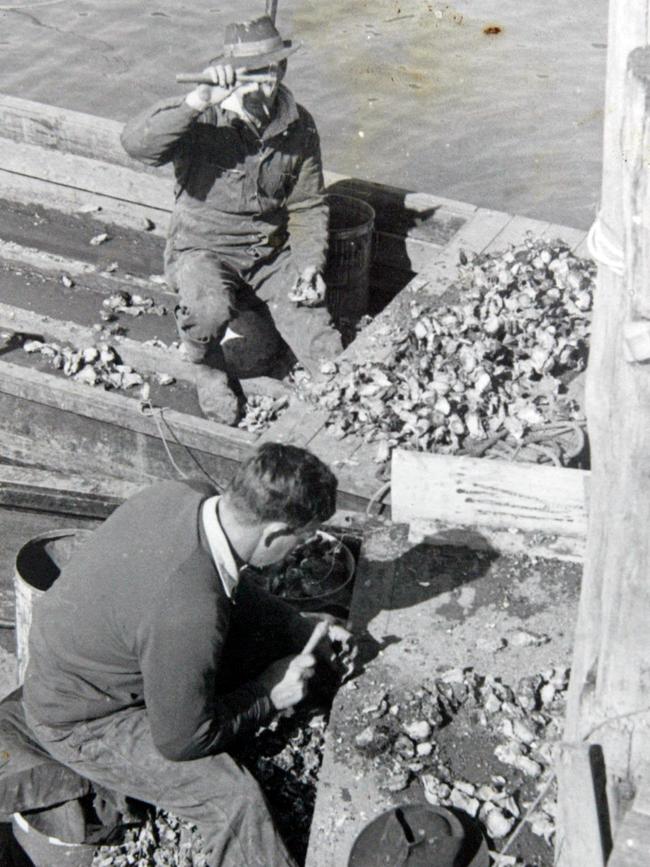
The oyster farmer, who still recalls his earliest memories with his father as a young boy being out on trawlers laying oysters in their racks, was one of eight children.
His father gave all of his siblings a role to play in the business before retirement, when Rob took over the successful venture and encouraged his own children to “join the family trade”.
“Most of us were brought up with something to do with fishing or oysters in our family,” he says.
“It was a big part of our everyday life and our entire family depended on the river, it is very important to us.”
The waiting game
Both Rob Moxham and Bruce Alford had heard of POMS before it swept their river and almost destroyed the entire industry.
Several farmers, including Bruce Alford, had worked alongside the Department of Primary Industry with scientific research in the years and months leading up to the outbreak.
“It wasn’t something that they were going to miss because it was devastating and happened quickly.”
Former DPI scientist and University of Sydney Virologist, Dr Paul Hick, was on the ground just hours after farmers had discovered the disease had struck the Hawkesbury.
“I was working with NSW DPI in 2010 when Oyster Herpes Virus (POMS) was detected in the Georges River,” Dr Hick says.
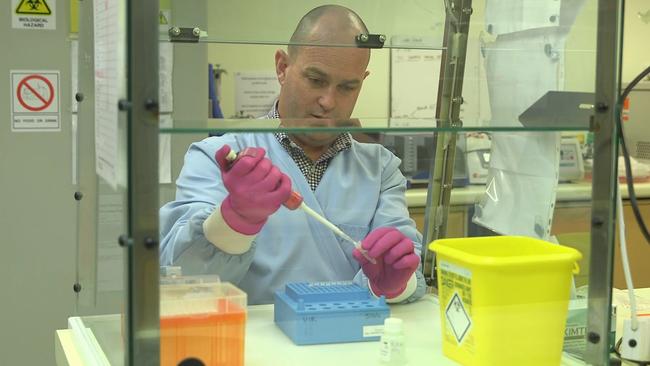
“It was devastating there and caused widespread mortality.
“We were working in the Hawkesbury River as a testing ground, waiting for it to arrive, but hoping that it wouldn’t.”
Dr Hick says it was never a matter of if, but when POMS would wipe out the Hawkesbury.
“It is a disease that has been spreading through the world for years and as a scientist we saw the propensity for this virus to spread across Australia,” he says.
“I remember the day the farmers called to notify us of the POMS outbreak in the Hawkesbury River.
“It wasn’t something that they were going to miss because it was devastating and happened quickly.”
Scientist, who were already working to analyse the characteristics of POMS in the Georges River, hurried to investigate.
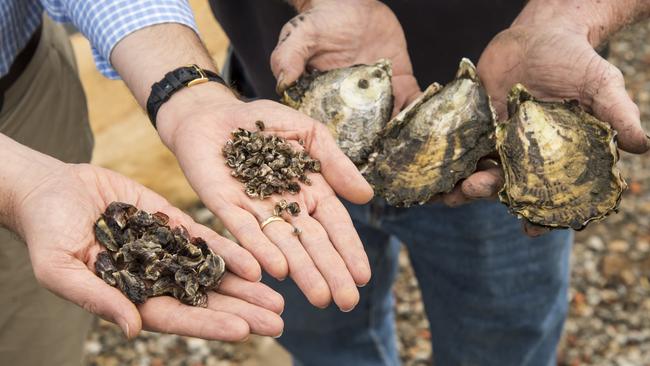
“We were able to turn around lab results within 24 hours to confirm that it was the POMS outbreak we always knew would come,” he says.
“It is a clever pathogen that stays in animals for a long period of time and that is the reason it is so successful in remaining in an estuary and reoccurring over time.”
Dr Hick described the “horrid smell” and the sight of scavenger birds circling the racks of oysters as farmers worked to save what was left of their industry.
“Researchers at Sydney University were already working in collaboration with Bruce Alford on the Hawkesbury before the outbreak, so they were very in tune with the expectations of what the outbreak would look like,” he says.
“Farmers co-ordinated with scientists to do a survey and work out which leases were infected and they worked out biosecurity measures in the hope of reducing the spread.
“From a research point of view it was actually awe-inspiring to see the virus that we have worked on wrecking havoc in a natural system.”
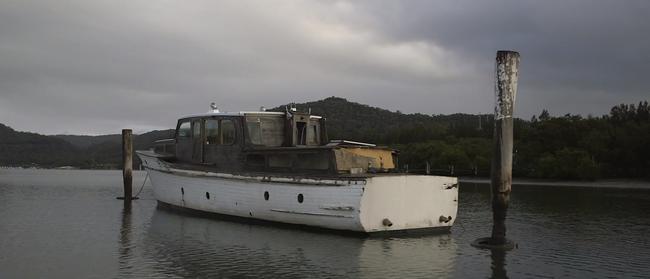
A new lease of life
However, more than a decade battling to keep the oyster industry alive on the Hawkesbury River may soon pay off.
In 2016, researcher and Australian Seafood Industries general manager, Matt Cunningham undertook the mammoth project of working to not only investigate the disease, but create a POMS resistant breeding program at his Tasmanian-based research centre.
In March, Berowra federal Liberal MP, Julian Leeser, and Federal Agriculture Minister, David Littleproud, announced the ASI breeding program would be established in the Hawkesbury and Georges rivers. A total of 1.8 million oysters were introduced to the river systems in August in an effort to eradicate POMS.
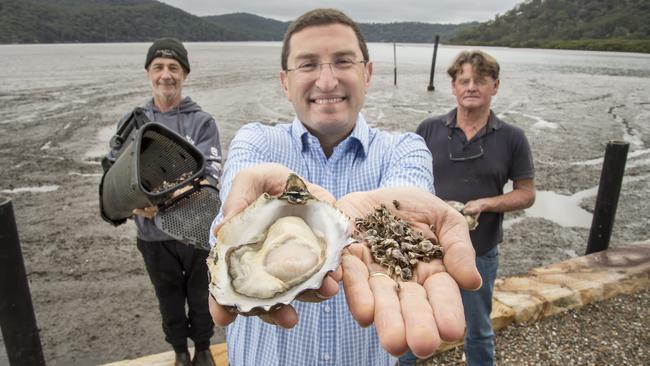
“It was hard to hear about proud, hardworking people who have had their livelihoods crippled by something completely outside their control,” Leeser told the Saturday Telegraph.
“Some of the farmers are the second, third or fourth generation to work on the Hawkesbury.
To hear of generations worth of work and investment being wiped out in a matter of days was just tragic.”
The Berowra MP said it was his first order of business to campaign for funding to support farmer following his election to federal parliament.
“We encouraged the farmers to apply for a grant to trial a POMS resistance triploid Pacific oyster for the first time in the wild,” he says.
“ The farmers secured the grant earlier this year and he spates arrived just over a month ago.”
Despite the hardships they have faced, Bruce Alford and Rob Moxham both say they wouldn’t spend life any other way.
“There are a lot of things I love about this place — mainly the river,” Moxham says.
“Everyday you go up on the water and it is a new experience.
“I never get tired of going up the river.”
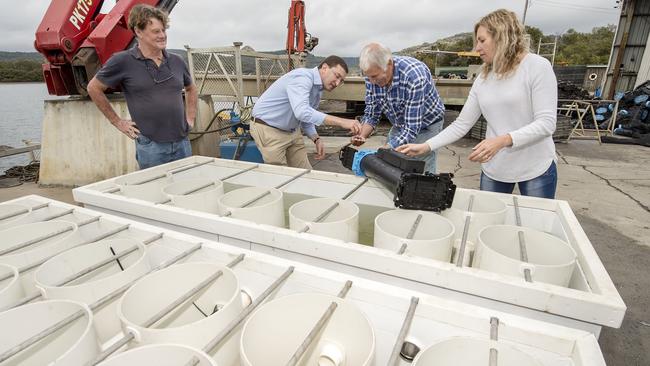
Moxham says there will always be demand for oysters, and new spats of resistant strains will “make sure farmers in the Hawkesbury have a way to move forward”.
“We need to make sure that we aren’t just hanging on with our fingernails so we can make use of new opportunities and share this industry with generations to come.”
Bruce Alford says he has spent more than four decades “playing on the Hawkesbury”.
As a child he and his siblings would splash about in the water at their holiday home in Patonga, before he decided he wanted to spend the rest of his life doing the same thing.
“Living on the river is one of those things, it is a lifestyle you can’t beat,” he says. “I am nearly 50 now and I still treat this as mucking around on the river — it isn’t a job to me.
“As much as it isn’t the most ideal thing of holding onto this business, because it has taken so much out of us, where else would I want to be?
“It is a magical lifestyle to lead.”


Add your comment to this story
To join the conversation, please log in. Don't have an account? Register
Join the conversation, you are commenting as Logout
Here’s what you can expect with tomorrow’s Parramatta weather
As we move into summer what can locals expect tomorrow? We have the latest word from the Weather Bureau.
Here’s what you can expect with tomorrow’s Parramatta weather
As we move into summer what can locals expect tomorrow? We have the latest word from the Weather Bureau.